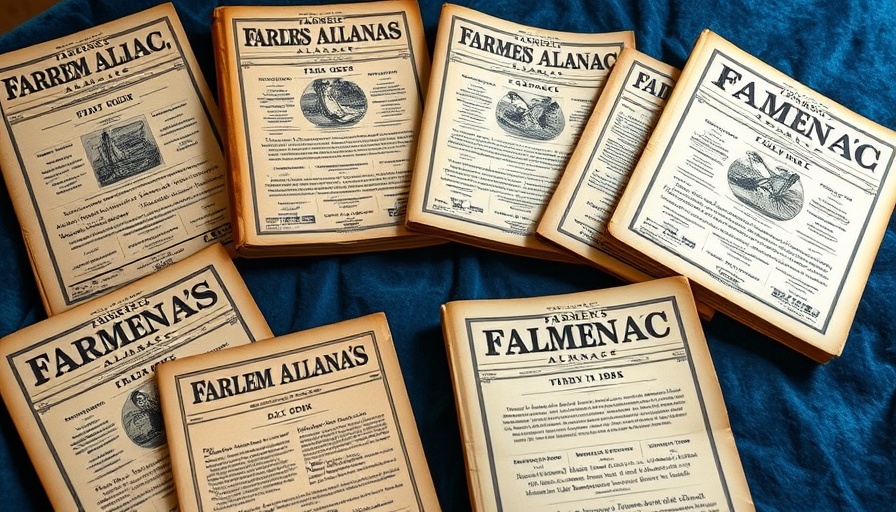
The Farmer's Almanac: A Time-Honored Tradition
The Farmer's Almanac has long served as a staple in American households, providing more than just weather forecasts. It encompasses gardening tips, celestial events, folklore, and cultural traditions, blending practicality with entertainment. With two main versions in circulation—the Old Farmer’s Almanac established in 1792 and the Farmers’ Almanac, which came into being shortly thereafter—these publications have cemented their place in the fabric of American life.
How Accurate Are the Predictions?
Accuracy is the cornerstone of any weather forecast, and the Farmer's Almanac faces scrutiny compared to modern meteorological methods. Earth systems scientist Dr. Hansi Singh asserts, “The Farmer’s Almanac creates its forecasts largely on historical weather patterns, sunspot activity, and even astrology.” While the Old Farmer's Almanac relies strictly on historical data, the Farmers’ Almanac embraces a more eclectic mix of influences. Understanding these methods raises questions about the reliability of forecasts that residents in the MidSouth count on for their gardening and home maintenance tasks.
Gardening with the Almanac
For homeowners, the gardening advice contained within these almanacs extends beyond mere forecasts. By offering information tailored to specific planting times and seasonal changes, the almanacs empower individuals to cultivate their gardens efficiently. Understanding your local climate and aligning it with the Almanac's insights can result in healthier plants and more productive gardens. Whether you’re a novice or seasoned gardener, incorporating the almanac’s wisdom could enhance your outdoor space.
Folklore: More Than Just Fun Stories
Both versions of the Almanac delve into folklore, combining fun stories with valuable agricultural wisdom. These narratives often contain kernels of truth acquired over centuries of farming practices. For instance, understanding how lunar phases can influence planting and harvesting times may yield better results, allowing audiences in the MidSouth to leverage traditional wisdom to their modern gardening methods.
Climate Change: A New Variable
The impact of climate change presents challenges for the predictions made by the Farmer's Almanac. As weather patterns shift, farmers and homeowners alike must adapt their planning strategies accordingly. While historical data offers valuable insights, the accuracy of long-term forecasts may become increasingly complex. Residents are encouraged to not only align their gardening strategies with the almanac but also to stay informed about current climate trends that could affect their home and garden.
Embracing the Tradition
Whether one views the Farmer's Almanac as an entertaining collection or a reliable forecasting tool, its rich history and tradition are undeniably valuable. For homeowners in the MidSouth specifically, leveraging the Almanac's insights into gardening and planning can forge a connection with their homes and the natural environment surrounding them. Recognizing the blend of knowledge and folklore creates an appreciation for the way modern life intertwines with longstanding traditions.
Why Knowing This Matters
Understanding the Farmer's Almanac not only serves practical purposes but also enriches the cultural fabric of gardening and home management. Homeowners can benefit from integrating these traditions into their routines, fostering a deeper connection with their natural environments. By using the Almanac as a guide, they can blend past wisdom with modern practices, leading to thriving gardens and improved home lives.
As you explore the possibilities offered by this time-honored tradition, consider how the Almanac fits into your own home routine. What advice can you use for your next gardening project? What old stories resonate with you that you might pass along to future generations?
 Add Row
Add Row  Add
Add 



Write A Comment